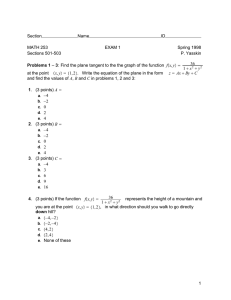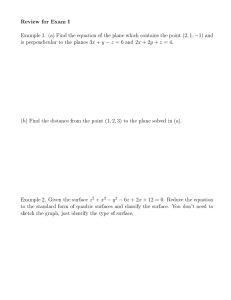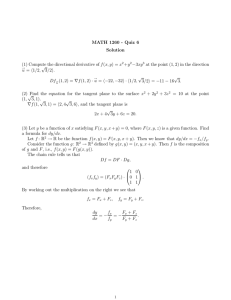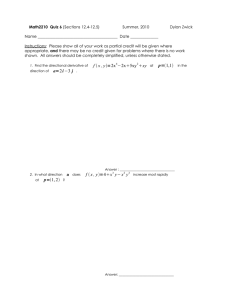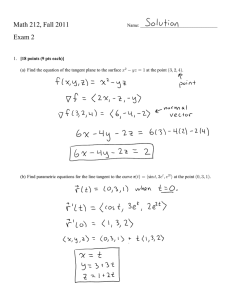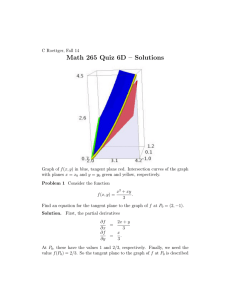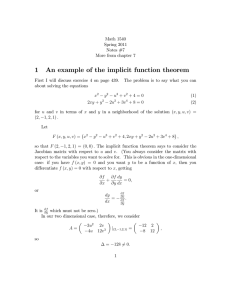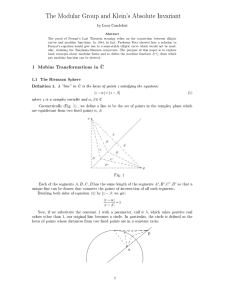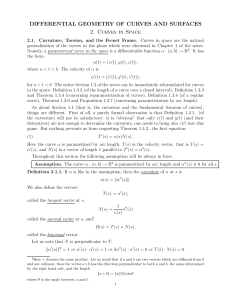Practice Problems: Exam 2
advertisement
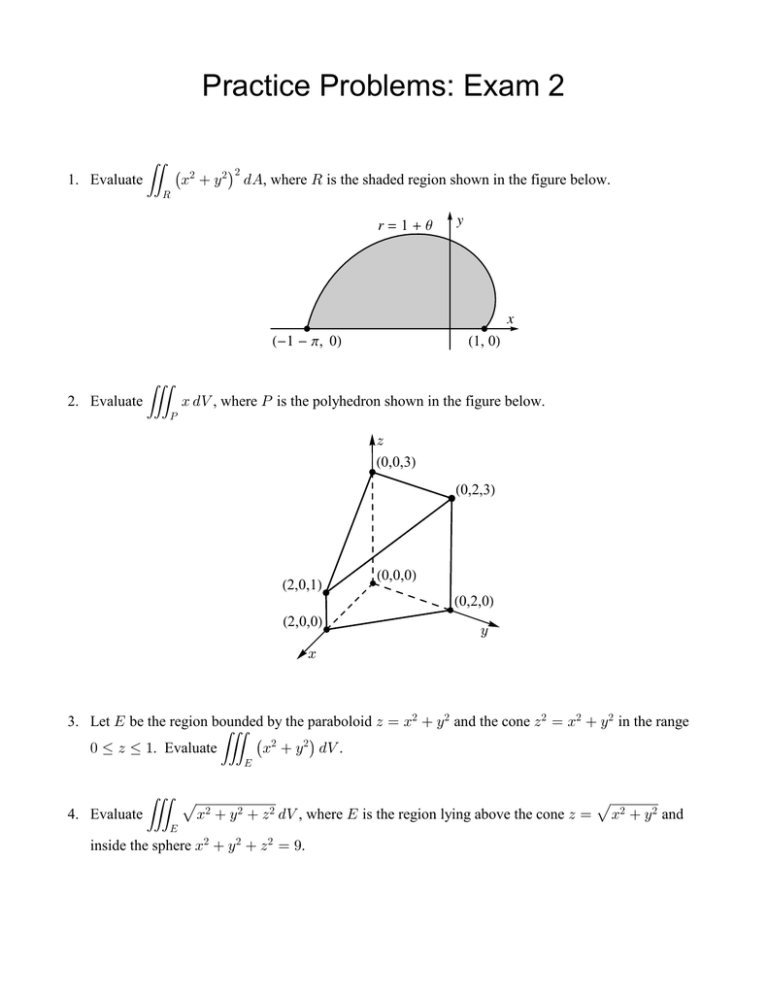
Practice Problems: Exam 2 # 1. Evaluate (( ˆB# C# ‰ .E, where V is the shaded region shown in the figure below. V r=1+Θ y x H-1 - Π, 0L H1, 0L 2. Evaluate ((( B .Z , where T is the polyhedron shown in the figure below. T z H0,0,3L H0,2,3L H2,0,1L H0,0,0L H0,2,0L H2,0,0L y x 3. Let I be the region bounded by the paraboloid D œ B# C# and the cone D # œ B# C# in the range ! Ÿ D Ÿ ". Evaluate ((( ˆB# C# ‰ .Z . I 4. Evaluate ((( ÈB# C# D # .Z , where I is the region lying above the cone D œ ÈB# C# and I inside the sphere B# C# D # œ *. 5. In the following figure, a rectangle is tangent to the ellipse B# %C# œ "$ at the point a$ß "b. Find the coordinates of the point T . 4 2 P H3, 1L 2 2 6. Let P be the line ra>b œ Ø# $>ß $ #>ß " >Ù, and let T be the plane B #C D œ %. Find the equation of the plane perpendicular to T that contains the line P. 7. Find the equation of the sphere centered at the origin and tangent to the plane B #C #D œ "&. 8. Let L be the helix defined by the equations B œ cosa1>b, C œ sina1>b, D œ #>. (a) Find the length of L between the points a"ß !ß !b and a"ß !ß %b. (b) Find the coordinates of the points at which L intersects the sphere B# C# D # œ &. (c) Find the equation of the plane normal to L at the point a!ß "ß "b. 9. Let G be the curve ra>b œ Ø%ß $ >ß #>Ù for ! Ÿ > Ÿ $, and let FaBß Cß D b œ ØDß !ß !Ù. Evaluate ( ¸F ‚ . r¸. G 10. Let G be the curve ra>b œ ¢a" >b/ È> ß # sinˆ "# 1># ‰£ for ! Ÿ > Ÿ ". Use the Gradient Theorem (i.e. the Fundamental Theorem for Line Integrals) to evaluate ( /C .B ˆB/C C# ‰ .C. G 11. (a) Find the directional derivative of the function 0 aBß Cb œ &B# sina#Cb in the direction of the unit $ % vector ¢ ß £ & & (b) Find parametric equations for the tangent line to the curve ra>b œ ># "ß >% (ß >$ *¡ at the point ˆ&ß *ß "‰. (c) Compute ( C# .B B .C, where G is the line segment from the point a%ß #b to the point a"ß $b. G (d) Find the equation of the tangent plane to the surface B# C# D # œ # at the point a'ß &ß $b. (e) Find the distance between the planes B )C %D œ "# and B )C %D œ $!. 12. Use Green's Theorem to evaluate ( ˆB/B C$ ‰.B ˆB$ ÈC‰.C, where G is the unit circle in the G BC-plane, oriented counterclockwise.

